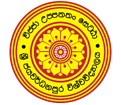Evaluation of Extraction Yield, Total Phenolic Content, and Total Flavonoid Content of Thirteen Underutilized Fruits in North Central Province of Sri Lanka
DOI:
https://doi.org/10.31357/ait.v5i02.8529Keywords:
underutilized fruit, total polyphenolic content, total flavonoid content, ethanolic extraction yield, Sri LankaAbstract
Sri Lanka is a biodiversity hotspot, rich with numerous fruit crops. However, most of them remain underutilized or neglected especially, in terms of industrial uses, the bioactivity of these fruit plants metabolites is largely unexplored and most of them are highly seasonal. The present study is focused on the extraction of bioactive compounds from 13 different underutilized fruits including Elaeocarpus serratus L.,Aegle marmelos, Phyllanthus emblica L., Limonia acidissima, Psidium guineense, Annona reticulata L.,Phyllanthus acidus, Pouteria champechiana (kunth) Baehni, Flacourtia indica Burm. f) Merr.) Syzygium cumini L. Skeels, Morus alba var. indica, Passiflora foetida L., and Ficus racemosa L., and screen their bioactivity potential to increase awareness for its usage. Fruits were dried using the heat pump drying method at 40 °C for 15-20 hours. The dried powder was extracted using the cold maceration method in 70% ethanol in a 1:20 ratio for 24 h in a mechanical shaker with stirring at 125 rpm at 30 °C, repeated thrice, and vacuum filtered. The solvent was evaporated in a rotary evaporator at 25 rpm, a pressure of 180 mbar. According to the results, the extraction yield percentage ranged from 15.73 ± 1.67% to 55.05 ± 0.04% and the highest yield was reported for P. acidus and the lowest yield for the F. racemosa L.. Total Polyphenolic Content (TPC) of extracts ranging from 7.94 ± 0.70 to 330.80 ± 6.26 mg Gallic Acid Equivalent/g (Dry Weight), the highest TPC showed in P. emblica L. and the lowest in P. champechiana fruits. Total Flavonoid Content (TFC) of extracts ranging from 1.88 ± 0.40 to 271.84 ± 1.91 mg Quercetin Acid Equivalent/g (Dry Weight), the highest TFC was shown in P. emblica L., and the lowest in L.acidissima fruits. These findings support the sustainable utilization of these fruits; however, further research is required to screen the specific bioactive properties of these extracts, which will enhance their industrial applicability.
Downloads
Additional Files
Published
How to Cite
License
Copyright (c) 2025 Shashikamali W.S. Walimunia, Ilandarage M.N. Molagodab, Rajapakshagedara G.P.T. Jayasooriyac, K.K.A. Sanjeewad

This work is licensed under a Creative Commons Attribution-NonCommercial-NoDerivatives 4.0 International License.
The Authors hold the copyright of their manuscripts, and all articles are circulated under the terms of the Creative Commons Attribution License, which permits unrestricted use, distribution, and reproduction in any medium, as long as that the original work is properly cited.
The use of general descriptive names, trade names, trademarks, and so forth in this publication, even if not specifically identified, does not imply that these names are not protected by the relevant laws and regulations. The authors are responsible for securing any permissions needed for the reuse of copyrighted materials included in the manuscript.




